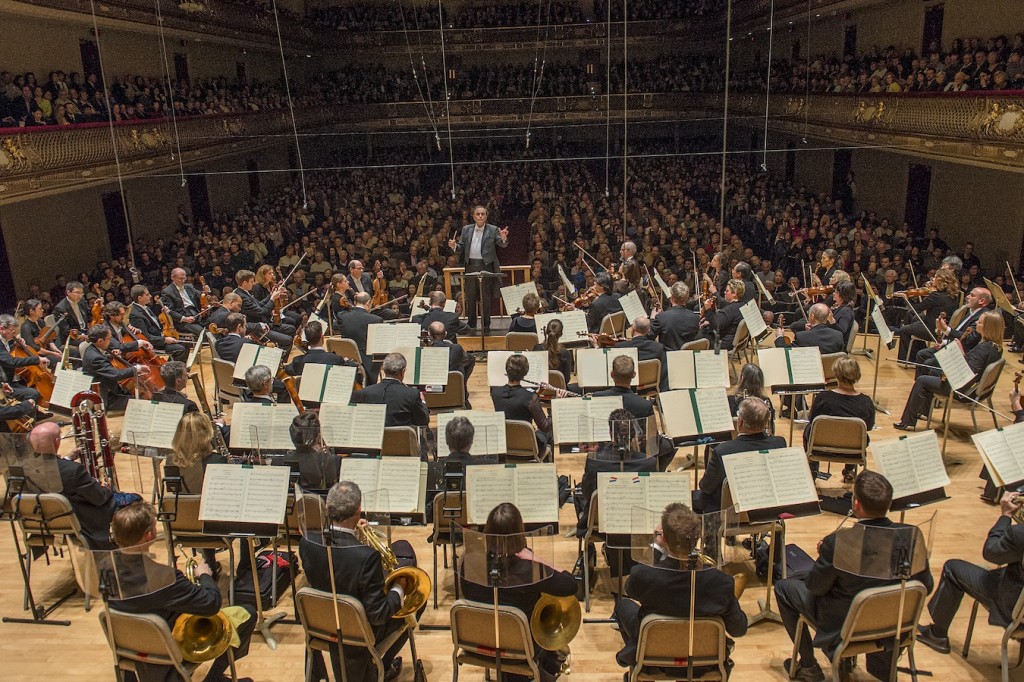Dutoit, BSO sputter in Mozart, shine in Mahler
Charles Dutoit and the Boston Symphony Orchestra brought two great symphonic innovators to Symphony Hall Thursday night. One got the performance he deserved, the other didn’t.
The best that can be said of Mozart’s Symphony No. 38 in D major (“Prague”) on Thursday night is that it had its moments. Mahler’s Symphony No. 5, on the other hand, was hitting on all cylinders from its arresting opening trumpet call to its frenzied windup an hour and a quarter later.
The imbalance in the quality of the performances was especially regrettable because programming these two symphonies together had been such an inspired idea in the first place. They share not only a prevailing key of D but an obsession with counterpoint and a determination to produce something really new, Mozart for his adoring fans in Prague and Mahler for those few of his contemporaries with ears to hear.
A performance of the “Prague” Symphony with the commitment and vitality that was lavished on Mahler’s Fifth would have been a real eye-opener. Instead, the work’s slow introduction sounded tentative—horns shaky, strings late—and, far from building dramatic tension, seemed in constant danger of falling apart.
The ensuing Allegro suffered at first from weak characterization of Mozart’s distinctive themes, but the performance rallied somewhat in response to the development’s exuberant counterpoint, and at least the energy level was higher after that.
Although Dutoit moved the Andante along in a brisk three, the performance still felt a little bar-by-bar, well-crafted in detail but lacking direction. Along the way a strikingly Brahmsian kind of wind-string dialogue caught one’s ear, looking forward as well to the “orchestra of chamber groups” effect in Mahler’s Fifth.
The BSO can be a fast car, but Dutoit didn’t exceed the speed limit in the finale, taking time to let all the instrumental dialogue and piquant syncopations be heard. He even repeated the movement’s exposition—hardly an extravagance, considering the amount of time one was about to invest in Mahler—and if this wasn’t the most pulse-pounding “Prague” finale ever played, it certainly felt like a generous helping of wonderful music, played with polish and a steady hand at the helm.
In the Mahler’s opening funeral march and the stormy developmental movement that followed, Dutoit again demonstrated his exceptional abilities as a musical dramatist. He had a powerful ally in principal trumpeter Thomas Rolfs, whose gorgeous tone and wide emotional range—from dire to majestic to tender—lit up the music every time he raised his instrument.
In yet another Mozart connection, the stately dotted rhythm of Mahler’s funeral march (tum tum ta-tum tum) is a slowed-down version of the earlier master’s favorite allegro march figure (think the opening of the “Jupiter” Symphony). Dutoit, while keeping the rhythm “strict” as instructed in the score, nevertheless found ways to expand and contract the phrases expressively, the little surges of emotion building steadily to fortissimo intensity.
If the strict march was about emotions held in check, the ensuing movement, marked “Stormy, with utmost vehemence,” was about the rage beneath the surface, subjecting themes from the march to turbulent development. Dutoit managed the storm with assurance, drawing red-blooded anger from low brass and biting sarcasm from the winds, retreating at mid-movement to a desolate slow march for cellos.
It’s been noted that Mahler’s Fifth has much in common with Beethoven’s same number: an attention-getting “first four notes” and a compelling first movement, followed by the problem of how to make ultimate triumph as emotionally convincing as initial tragedy, and postponing the issue by inserting an intriguing, emotionally-ambivalent scherzo.
Dutoit managed Mahler’s scherzo effectively, both in its folksy, Tyrolean guise, sparkling with glockenspiel, and in the tipsy swoops of its operetta-style waltz. The long movement ventured pretty far afield, but the orchestra played with character and balance throughout, achieving some memorable moments, such as an eloquent dialogue between the cellos and James Sommerville’s mournful yet bold horn.
Like Samuel Barber’s Adagio for Strings, the famous Adagietto from Mahler’s Fifth (for strings and harp) is either one of the saddest pieces ever written or one of the sexiest. It’s hard to get past all the anecdotery about the composer’s using this music to court his future wife Alma, and try to understand what this movement is doing here, in this symphony.
Dutoit and his string players were not much help with that, giving a rather cool rendition that had moments of crescendo and surge, but not much emotional energy behind it. Maybe, as Gertrude Stein would say, that’s the answer.
After so much ambiguity, it was a relief to hear a finale that was simply eager to please. Here as at the end of the “Prague,” fugal gaiety was the order of the day, and Mahler emulated his predecessor for energy and transparency.
Dutoit emulated himself in the Mozart finale, keeping this Mahler movement “lively” and “giocoso” as instructed, but not too fast. Mahler’s pared-down, astringent scoring prevented any note of pomposity from entering the proceedings, as each section—particularly the brass—hit its marks with delightful assurance and verve. Dutoit kept the long crescendos buoyant and exciting, especially in the delirious coda that topped it all.
At the end, the audience rose to its feet and cheered Dutoit and the players’ individual and sectional bows—most loudly of all when the conductor, not once but twice, plunged through the music stands to the back row and shook trumpeter Rolfs’s hand.
Mahler’s Symphony No. 5 will be performed by itself, with comments by BSO violist Cathy Basrak, at an “UnderScore Friday” concert 8 p.m. Friday. The full program will be repeated 8 p.m. Saturday. bso.org; 617-266-1200.
Posted in Performances
